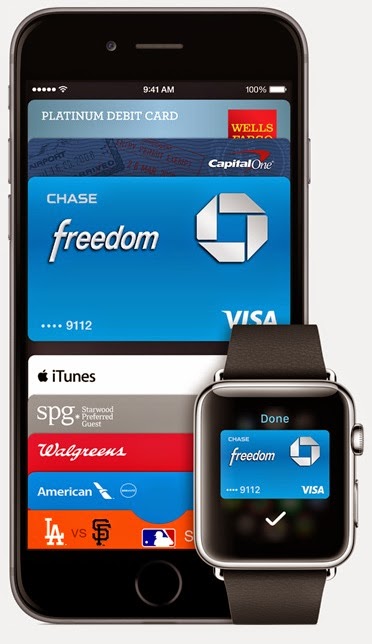Last week in Boston, for customer meetings, I had the opportunity to witness, on American soil, the release of the iPhone 6, the iOS 8 and the Apple Watch. Received with great enthusiasm by a legion of admirers, the arrival of the devices mark the beginning of a new era and were featured on the cover of numerous specialized magazines (or not). Tthe traditional Time magazine, for example, devoted its cover and six pages to the subject, treating it as a paradigm shift and a profound shift on lifestyle. According to the report, speaking directly about the new watch "Apple is not just reviving an old category, it's moving the boundary".
Apple Watch is something new
Wristwatches have been around for decades. They were important in the wars of the last century, in aviation, on sports and gained prominence with sophisticated and expensive models, often attaining the status of jewelry. However, in a large part of the story, its primary function was always tracking the time (and, of course, function as alarm clocks or timers). In the 70s we witnessed the arrival of the first modified model, which became known as "calculator watch". The model won the market and survives today and is easily found in retail stores for about $ 25.00. Since then, no significant advance.
Recently we saw a further shift with the arrival of smart watches. Samsung went ahead and produced more than one million units of the Galaxy line, the report said, without producing large commotion in the market and no signs that it will "catch". Google also launched its model, which so far has not sold half a million units. This is the scenario in which Apple hits the market. The big difference is that Apple comes with more than just a watch. When CEO Tim Cook made the speech launching, repeatedly used the "personal" and "intimate" words. Basically, what Apple is doing is "asking you to strap a computer to your arm".
Wearable devices
Apple Watch is the bet of the Cupertino company in the area of wearable devices. There are already numerous applications in this area, such as those applied to the area of fitness and health. Companies like Nike, Fitbit, Jawbone and many other already placed apps on the market that allow you to monitor the behavior of your body during physical activity. Apple's proposal is to control a number of personal indicators such as pressure, temperature, heart rate, blood sugar level and more. Definitely, we still lack a clear vision of the scope of what lies ahead.
In this first version, Apple offers adapted versions of famous applications for weather forecast, value of stocks, passbook, photos, maps and more. Everything, of course, connected with an iPhone within reach for functions that require an Internet connection. Furthermore, using the HomeKit app, you can control home devices like your television, house lights, thermostat and more.
One of the big news is "Apple Pay" payment system. The proposal here is to leave behind the current means of payment such as checks and credit cards. Paying with Apple Pay all you need is your Apple Watch. An antenna on the iPhone 6, using the NFC technology (Near Field Communication) and your personal digital allow a payment to be made in seconds.
However, there are challenges ahead. So far, according to Time, the adoption of wearable devices has been slow. The main reason would be the aesthetic issue and also a personal matter. The use of such devices, monitoring personal information and eventually making it available for use by another company, is opening new loopholes in legislative issues. New terms will be needed for personal information to be shared.
As for aesthetics, apparently there was great progress. The first Smart Watches were large and without a proper style. Apple Watches comes with a lot of care with respect to the design and is likely to become objects of desire and even became fashionable.
Corporate Apps
One point not yet explored in this new frontier is the use of this type of device in the corporate world. During the launch, the focus was primarily on the end user. However, when we consider the use of an Apple Watch, or more broadly, of wearable devices, the applications are numerous. In fact, we can not even see all its possible uses.
A few weeks ago, IBM announced a major partnership with Apple to develop business applications for Apple devices. At the time, it was possible to visualize enterprise applications running on an iPad or an iPhone. Now, it opens a new window. For example, applications that allow the monitoring of equipment on an oil rig can gain agility. In addition, you can monitor the health of an employee, even in remote locations.
In conclusion, yes we are living one of those rare moments in which technology can transform our lifestyle and our work environment, just as happened with the advent of Personal Computers, Internet, Social Networks and the iPhone. The era of wearable devices arrived.
If we think of the universe of possibilities now available we cann't foresee wath is still to come around. Adding all this to Watson, we can see huge benefits in several areas such as health, telecommunications and many others.
Also according to Time, the great paradox of this new era is that wearable devices give you more control and, at the same time take away. We will, then, need to decide how much control we want, and how much we are willing to give away.



